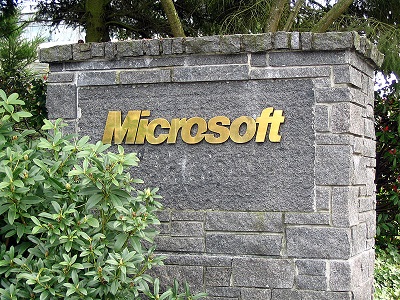Although the wearable technology hasn’t been confirmed by the tech giant, it could be a meaningful play.
If rumors are correct, then Microsoft will be the next giant to enter into the smartwatch marketplace, with the Surface Watch to be released at some point, likely this year.
The technology news to watch will be the importance of this play in the overall market.
At the moment, there are already a large number of smartwatch devices that have made their way into the market, and there is more than a handful ready to launch before the end of the summer. This can make it very challenging for any single device to stand out and for later additions to carve their way into an already crowded ecosystem. That said, among this considerable crowd of devices, it seems to have been missed that there are very few apps for wearables, which makes it difficult to build a solid appeal for mainstream customers.
Without the apps, it is challenging to show consumers that a smartwatch is worth the added expense.
 A recent BI Intelligence report suggested that the entire wearables app ecosystem is experiencing some significant fragmentation. The cause of this problem is that every new device that is added to the marketplace runs on a platform that is shared by very few others. As of yet, there is little standard in the experience provided by smart gadgets.
A recent BI Intelligence report suggested that the entire wearables app ecosystem is experiencing some significant fragmentation. The cause of this problem is that every new device that is added to the marketplace runs on a platform that is shared by very few others. As of yet, there is little standard in the experience provided by smart gadgets.
Without a dominant operating system or two, or three, it makes it difficult for mobile app developers to come up with a pool of applications that is sizeable enough to make it worthwhile for the average consumer to drop a few hundred dollars on a device that is essentially a nifty accessory to go with his or her smartphone and/or tablet.
That said, BI Intelligence pointed out that Microsoft may be able to stand out from among much of its competition by providing a smartwatch that is not limited in that way. Instead, it could provide cross-platform functionality so that it would function with both Android and iOS platforms as well as with the Xbox One and with desktop PCs.
The company is hoping that Tel Aviv will provide applications for its AR wearables.
Epson, a company that is best known for its printer tech, has now started an Israel based marketing campaign for its augmented reality glasses only one week after those wearable devices experienced their European and American debuts.
These AR based wearable technology devices are somewhat similar in idea to Google Glass.
Their augmented reality glasses are called the Epson Moverio BT-200. They include sensors, cameras, projects, as well as Bluetooth connection, which allows an Android smartphone or tablet to be displayed and projected onto the glasses so it can be seen by the wearer. Elements of the device’s software were originally developed in Israel, according to the executive vice president in charge of marketing the Movero BT-200, from Epson Europe, Valerie Riffaud-Cangelos.
These augmented reality glasses now need a broader range of apps and Epson is turning back to Israel for them.
The wearables weigh only 88 grams and are filled with various sensor and imaging components that allow wearers to be able to view what they would otherwise see on the screen of the Android device. In this, they are comparable to the idea behind Google Glass. They can see their emails on the glasses or check out the latest social media posts. It is even possible to watch YouTube videos or browse through web content.
Riffaud-Cangelos explained that the whole idea of the Moverio is that it should be used with augmented reality apps. “For example, you could have an app where a person would see an overlay of how to change a tire while they are actually doing it.” In theory, they would be able to save time, frustration, and money because they could follow a pattern that was being shown to them over top of their view of the real world jack and bolts.
Equally, the augmented reality glasses could also be used for fitness activities and for entertainment games. It could demonstrate the right moves for a specific type of physical activity, such as yoga, or show students how something would have looked if they were seeing it hundreds of years ago.
 A recent BI Intelligence report suggested that the entire wearables app ecosystem is experiencing some significant fragmentation. The cause of this problem is that every new device that is added to the marketplace runs on a platform that is shared by very few others. As of yet, there is little standard in the experience provided by smart gadgets.
A recent BI Intelligence report suggested that the entire wearables app ecosystem is experiencing some significant fragmentation. The cause of this problem is that every new device that is added to the marketplace runs on a platform that is shared by very few others. As of yet, there is little standard in the experience provided by smart gadgets.
